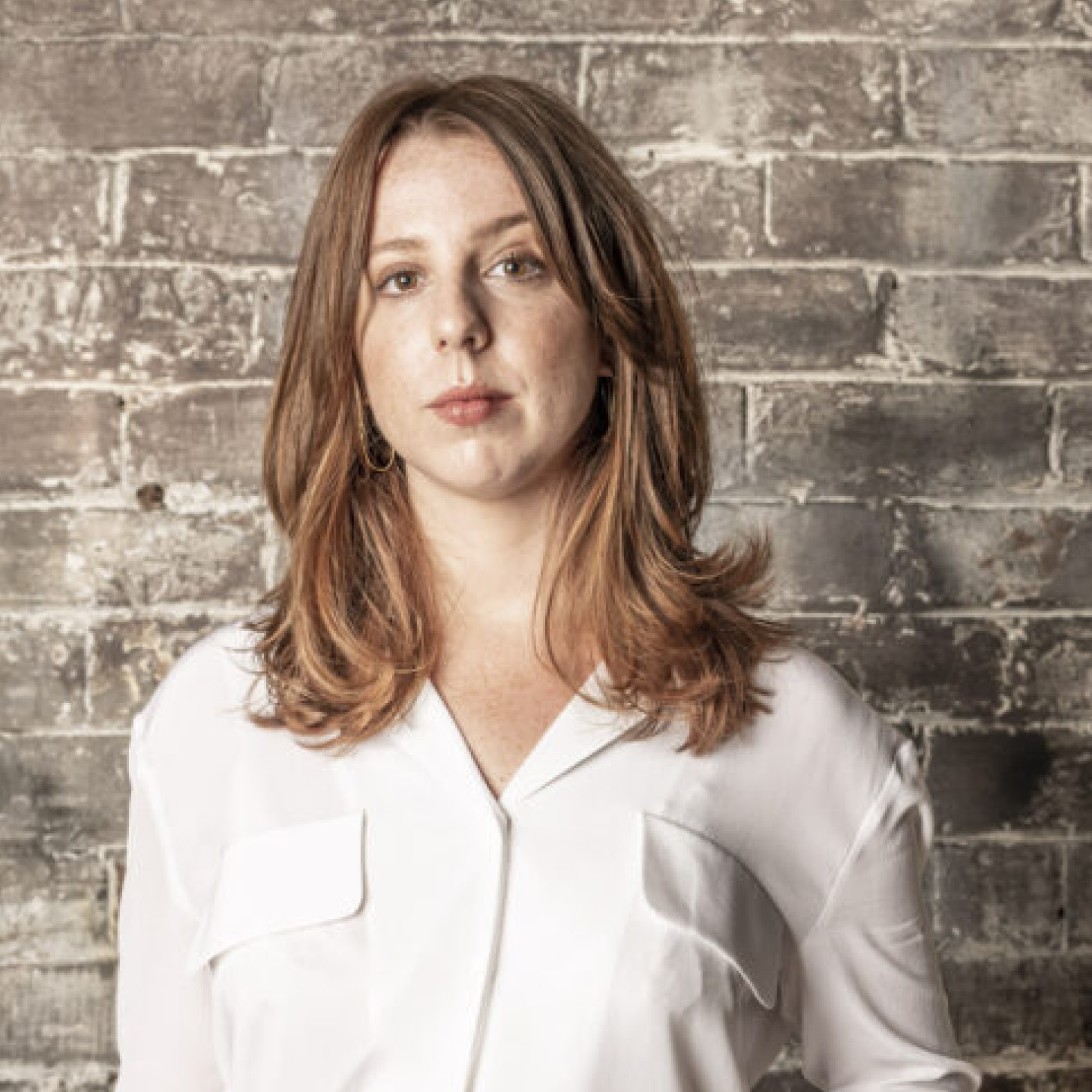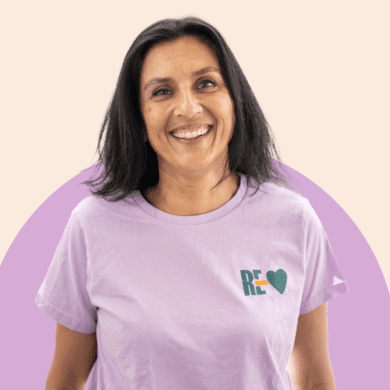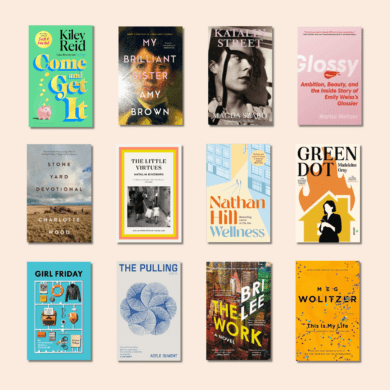On a warm Friday night towards the end of last year, travel executive Kat was getting ready for a first-date picnic with someone she’d matched with on Tinder that week. Applying her favourite Dior lipstick and dabbing sandalwood to the pulse points of her neck, she felt a flutter of nervous excitement.
On the way out the door, she grabbed a six-pack of beer from the fridge – and gave her long-time partner, Chris, a kiss goodbye. “Have fun on your date, babe,” he called after her, unfazed.
This is Ethical Non-Monogamy (ENM) as practiced for the past five years by Kat and Chris, and many other couples who’ve opened up their relationships. While the concept of an open relationship isn’t new, it has certainly become buzzy online. In fact, this three-letter abbreviation has become commonplace across dating app profiles, signalling that the swiper is married or in a committed relationship, but seeing other people.
The difference between ENM and infidelity is there’s no coercion or secrecy
The number of singles adding the abbreviation to their dating profiles in 2022 rose by 242 per cent on the dating app Feeld, while Hinge has launched a new feature allowing users to mark themselves as monogamous or ENM. The update is a sign of the increasingly fluid times.
What makes ENM different from, say, infidelity, is the transparency. “The difference between ENM and infidelity is there’s no coercion or secrecy. Instead, there’s consent and agreement,” explains Elisabeth Shaw, a clinical psychologist and CEO at Relationships Australia NSW. In other words, for couples exploring ENM, both people are fully onboard with the idea of dating other parties.
Kat and Chris, who are in their early and late thirties respectively, had already been together for nearly a decade when they opened up their relationship.
In the regional city where they live, they are a poster couple of sorts for the ENM lifestyle. She works in travel and he is in the creative arts. She has a chic blonde bob and he has an impressive beard and a nose ring. Together, they make an attractive couple.
Other people think so, too.
As much as Chris and I love each other, we also accept that one relationship can’t be, do and fulfil everything in the world
“We started talking about ENM around the nine-year mark [of our relationship], purely because friends of ours were in polyamorous relationships, and it sounded fun. We had a conversation about it because we both thought it was interesting, but it was me who really introduced it into our relationship,” says Kat.
Kat wasn’t unhappy in her relationship with Chris. There wasn’t anything wrong or missing. ENM wasn’t a band-aid for a failing relationship, it was an opportunity for a more successful one. “We knew we weren’t going to get married or have kids – I’ve never wanted that – so when we were first exposed to ENM, it got us thinking about all the other experiences that are out there,” she says. “As much as Chris and I love each other, we also accept that one relationship can’t be, do and fulfil everything in the world.”
It didn’t happen overnight. Kat didn’t wake up the morning after floating the idea of ENM in bed with a stranger. In fact, it was months and many conversations later that the couple popped their ENM cherry.
“It’s a big step to take. I was overseas for a work conference when I had the first opportunity to hook up with someone outside of my relationship. The other person was also at the conference, and I felt a connection with her that I wanted to explore further. I had a chat with Chris, and he told me he wasn’t in a good space and it probably wasn’t a great idea,” she remembers.
Here’s where the E comes into ENM. Kat listened to Chris’ feelings, she accepted his position and they both agreed it was best to let the opportunity pass.
Five months later, Kat reconnected with the person she met overseas back home and introduced her to Chris. “He and she really got along, and I obviously really got along with her, too. We both really liked her, and ended up getting into a relationship with her,” says Kat, of the throuple situation that began her ENM journey.
A throuple is considered a non-hierarchical ENM relationship, where each partner is equally involved with the others to the same degree. For Kat and Chris, that meant being in a relationship with each other and their new girlfriend at the same time.
It’s about more freedom, more love, more touch, more sex, more emotional support and more shared responsibilities
“It was intense,” admits Kat. Ultimately, it didn’t last. Kat was the one who brought another woman into her relationship, and she was the one who called it quits with the woman first: “After 18 months in the throuple, I decided to bow out. It wasn’t working for me and I didn’t want to jeopardise the friendship I had with the woman. Chris kept seeing her, and I started dating other people.”
There’s a misconception that ENM is always driven by men. In fact, as in Kat’s case, women are largely the ones instigating open relationships. “ENM is a female-led movement,” explains James Buckley, who has been non-monogamous for 15 years and is the founder of the support hub ENM Australia. “In hetero relationships, 70 per cent of open relationships are opened by the woman.”
People have different reasons for turning to ENM – sexual exploration, personal growth, romantic needs – but it all comes back to seeking intimacy, says James. “It’s about more freedom, more love, more touch, more sex, more emotional support and more shared responsibilities.”
For Cain, 37, it started with a book. After finding himself single and living in Australia – thousands of kilometres away from his religious family and his conservative upbringing in the US – Cain picked up a copy of ‘The Ethical Slut’ by Dossie Easton and Janet Hardy. The ‘practical guide to polyamory’ is a seminal book in the ENM space, first published in 1997 and updated several times since. Reading the book, Cain’s eyes were opened. And mind blown.
“It was a revelation to learn that you can see more than one person and have meaningful relationships with more than one person,” says Cain in his broad American accent.
He pauses and takes a deep breath before telling the story of his past. After getting married – and subsequently divorced – at a young age, Cain left the church. “When I found myself sexually active, there was a lot of resistance in my head [from internalised stigma], but then I realised I didn’t actually care about the rules or what anybody else thought [about ENM],” he says.
There’s this misconception that people who do non-monogamy don’t get jealous
In the time since discovering ENM, Cain has had two serious “nesting” relationships, and many “satellite” connections revolving around his nest.
These terms are common in the ENM vocabulary. ‘Nesting’ refers to the couple at the centre of the relationship universe – who often live together, in the same ‘nest’. A satellite partner is someone with some emotional and physical distance from the nest, an outside relationship revolving around the central couple.
Cain is quick to mention his relationships didn’t end because they were ENM. When monogamous relationships end, we don’t blame monogamy. But when there’s non-monogamy involved, it’s easy to place the blame there.
Don’t you get jealous? Aren’t you worried your partner will meet someone they like more than you? What if they take their hot new date to your favourite sushi restaurant!?
These are all hypothetical questions people in ENM relationships have heard a thousand times, and they’re also real-world challenges they’ve faced.
“There’s this misconception that people who do non-monogamy don’t get jealous,” says James of one of the early obstacles ENM couples need to overcome. “We definitely get jealous, it’s just that people in the ENM community learn how to understand their feelings and deal with them. We don’t run away from jealousy.”
There were a lot more boundaries in the beginning, like only exploring when we were on holiday and never with close friends
After 15 years of non-monogamy, James gets a kick out of jealousy these days. “I like to say I’m constantly looking for new and exciting ways to feel jealous,” he says, with an easy laugh.
Jealousy is a natural emotion, but it can be soothed, say those with lived experience of ENM. “It’s about building boundaries and working on trust,” says Kat. “With me and Chris, there were a lot more boundaries in the beginning, like only exploring when we were on holiday and never with close friends. We don’t have those boundaries anymore because we’ve built so much trust. Now the only boundary is to practice safe sex, everything else is on the table. Things are more of a conversation than a rule.”
It’s a good thing, too, because rules don’t work. As important as boundaries are in ENM, it’s impossible to control someone else’s emotions, says James. “It’s common for people to worry about their partner developing feelings for other people – and I think that’s okay in the beginning – but you can’t stop someone falling in love,” he explains.
For every Kat, James and Cain, there are people less open to speaking about their ENM experiences because those experiences have been negative. The bloke nursing a sore heart after his relationship ended when his partner wanted to see other people but couldn’t handle watching him do the same. The woman whose ENM boyfriend slept with one of her friends. The couple who got into ENM after an act of infidelity.
These are all stories I heard from people while researching this piece. However, these people – understandably – weren’t comfortable being quoted because they didn’t want to speak on a topic that didn’t work for them.
These stories reflect some of the main challenges for open relationships, says Elisabeth. “There are people who are misusing the term to justify their own behaviour. For example, just because someone on a dating app has disclosed that they’re in a non-monogamous relationship, doesn’t mean their partner has agreed to that,” she explains. “As soon as you move to unilateral decision-making, you’ve lost one of the key principles of ENM.”
There are people who are misusing the term to justify their own behaviour
In theory, ENM is all about the high-level principles of ethics, emotional intelligence and consent. In practice, it’s a lot more mundane. There’s a lot of planning.
Kat says the secret to a healthy ENM relationship is having a Google calendar. “It’s quite a lot of work making time for everyone and making sure everyone’s feeling okay. Logistically, it’s a big balancing act, involving lots of Google calendar syncing,” she says. “Chris and I try to line up our dates so we’re out with other people on the same nights, and home together on the same nights. But it doesn’t always work out that way.”
Dating multiple people takes some serious time management skills, and maintaining multiple relationships takes good communication. The C-word comes up a lot in ENM circles. “When I look back on my early days of non-monogamy, I see how poor my communication was. I’ve been on my own journey. To be in an ENM relationship, you need to get really good at communication,” says James.
“It’s about communicating what you’re doing and how you’re feeling, and making sure you’re getting the communication in return,” adds Cain.
In that sense, ENM relationships are just like monogamous relationships: communication is key. There are just more people to communicate with. “ENM is more of everything: more flirting, more first dates, more romance. On the flipside of that, there’s more disappointment, more breakups and more emotions,” says Cain, who recently split from his nesting girlfriend, but is still seeing a satellite partner he’s been with for several years. “She’s now survived two of my primary girlfriends, and she has her own primary boyfriend who she lives with. We started saying ‘I love you’ earlier this year.”
For people who’ve only ever known monogamy, it can be hard to comprehend being in love with two people at once – and having those two people know and accept the situation. “It’s not for everyone. There are certain people who would never be okay with their partner seeing someone else. It can be really challenging, there are times when I’ve been bawling my eyes out over someone, and Chris has been there holding my hand. It’s really lovely to have that support,” says Kat, who is now in a serious relationship with the person she met on Tinder and had that Friday night picnic date with.
“We kissed on the first date and things have developed from there,” adds Kat, noting that Chris – who also has another serious partner – is happy for them both. “I think that’s the best part of this style of relationship: getting to know people, connect with them and share lovely experiences together. That’s the best part of life, isn’t it?”
*Names have been changed
Want to read more stories like this? Sign up to PRIMER’s weekly newsletter.














No Comments